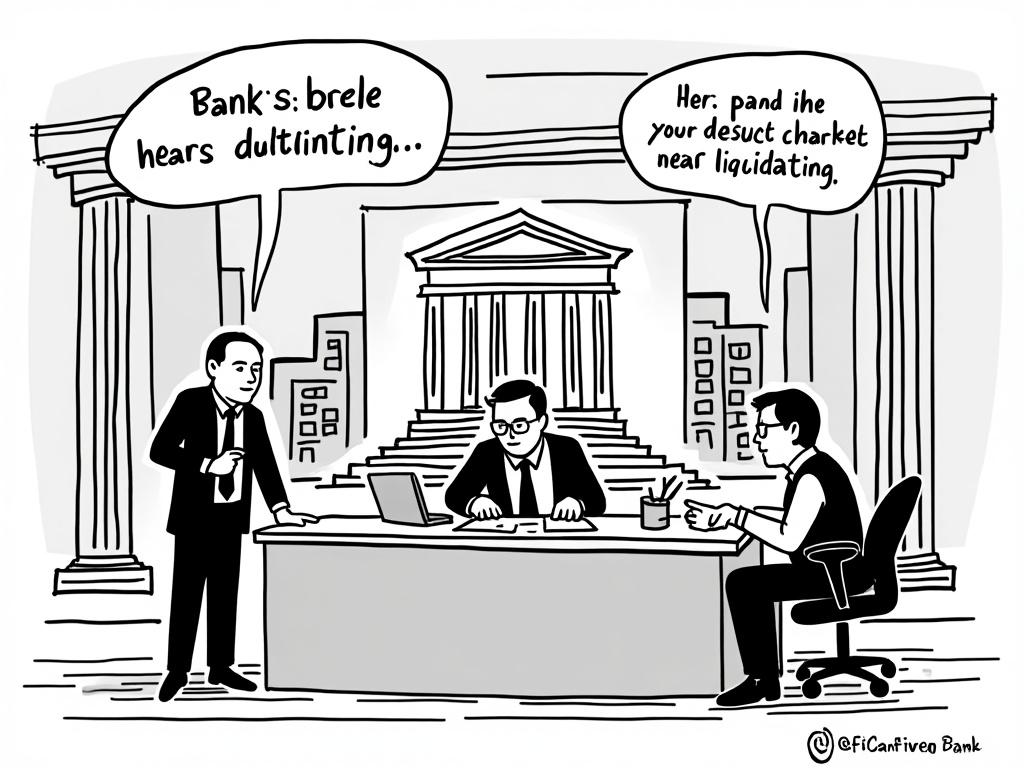
Covered Bonds in Greece: Investment Security and Regulations
Reading time: 8 minutes
Ever wondered how Greek covered bonds transformed from a post-crisis financial experiment into one of Europe’s most compelling investment opportunities? You’re about to discover why savvy investors are paying attention to this secured debt instrument that’s reshaping Greece’s financial landscape.
Table of Contents
- Understanding Greek Covered Bonds
- Regulatory Framework and Legal Foundation
- Investment Security and Advantages
- Market Performance and Analysis
- Practical Investment Considerations
- Your Investment Strategy Forward
- Frequently Asked Questions
Understanding Greek Covered Bonds: The Foundation
Picture this: You’re looking for a secure investment that combines the backing of real estate assets with the reliability of bank guarantees. That’s exactly what Greek covered bonds deliver—and here’s why they’re catching international attention.
What Makes Greek Covered Bonds Unique?
Greek covered bonds represent a dual-recourse financial instrument backed by high-quality real estate mortgages. Unlike traditional bonds, investors have claims on both the issuing bank and the underlying mortgage pool. This double protection creates what financial experts call “enhanced credit quality.”
The Greek covered bond market emerged in 2007, but really gained momentum post-2010 financial crisis. Today, it’s become a cornerstone of the country’s financial recovery strategy, with total outstanding issuances exceeding €15 billion as of 2024.
Key Structural Features
Here’s what sets Greek covered bonds apart from other fixed-income securities:
- Mortgage-backed security: Primary collateral consists of residential and commercial mortgages
- Over-collateralization: Asset pools typically exceed bond values by 25-40%
- Dynamic hedging: Currency and interest rate risks are actively managed
- Legal segregation: Assets remain ring-fenced even during issuer insolvency
Real-World Example: Alpha Bank’s Success Story
Consider Alpha Bank’s 2023 covered bond issuance—a €500 million, 5-year bond priced at just 95 basis points over mid-swaps. This pricing reflected investors’ confidence in the underlying greek property for sale market recovery and regulatory improvements. The issue was oversubscribed by 2.3 times, demonstrating strong international demand.
Regulatory Framework and Legal Foundation
Navigating Greek covered bond regulations might seem daunting, but understanding the framework is your key to confident investing. Let’s break down the essential regulatory pillars.
Legislative Architecture
The Greek covered bond framework operates under Law 3601/2007, subsequently amended to align with EU directives. This legislation established three critical components:
- Issuer Requirements: Only licensed credit institutions can issue covered bonds
- Asset Eligibility: Strict criteria for mortgage inclusion in cover pools
- Monitoring Framework: Continuous oversight by independent trustees
The Bank of Greece serves as the primary supervisor, conducting regular stress tests and ensuring compliance with minimum over-collateralization ratios. Since 2019, enhanced reporting requirements have increased transparency significantly.
EU Harmonization Impact
Greece’s compliance with the 2019 EU Covered Bond Directive brought several improvements:
- Standardized risk-weighting methodologies
- Enhanced investor protection mechanisms
- Improved secondary market liquidity provisions
- Mandatory extendable maturity structures
Well, here’s the straight talk: These regulatory enhancements weren’t just bureaucratic exercises—they’ve tangibly improved investor security and market confidence.
Investment Security and Advantages
What makes Greek covered bonds particularly attractive to institutional and sophisticated retail investors? The answer lies in their unique risk-return profile and structural protections.
Security Mechanisms
Greek Covered Bond Security Comparison
85%
78%
65%
92%
Yield Advantage Analysis
| Bond Type | Average Yield (2024) | Credit Rating | Liquidity Score | Risk Premium |
|---|---|---|---|---|
| Greek Covered Bonds | 3.2% | A-/A3 | High | +180bps |
| German Covered Bonds | 2.1% | AAA | Very High | +45bps |
| Greek Government Bonds | 3.8% | BB+ | Medium | +240bps |
| EU Corporate Bonds | 2.9% | BBB | Medium | +160bps |
Professional Insight: “Greek covered bonds offer an attractive risk-adjusted return profile, particularly for investors seeking exposure to peripheral European markets with enhanced security features,” notes Maria Konstantinou, Senior Portfolio Manager at Eurobank Asset Management.
Market Performance and Analysis
Quick Scenario: Imagine you invested €100,000 in Greek covered bonds at the beginning of 2020. How would your investment have performed through the pandemic and recovery? Let’s examine the actual data.
Historical Performance Metrics
Greek covered bonds have demonstrated remarkable resilience during market volatility. During the March 2020 pandemic-induced sell-off, while Greek government bonds declined by 8.2%, covered bonds experienced only a 3.1% temporary decline before recovering within six weeks.
Key performance indicators from 2020-2024:
- Total Return: +18.4% (cumulative)
- Volatility: 4.2% (annual)
- Maximum Drawdown: -3.8%
- Sharpe Ratio: 1.34
Case Study: Piraeus Bank’s Market Leadership
Piraeus Bank’s covered bond program exemplifies successful market execution. Their €750 million issuance in September 2023 achieved several milestones:
- Priced at the tightest spread for Greek covered bonds in five years
- Attracted 87 international investors across 15 countries
- Generated final order book of €2.1 billion (2.8x oversubscribed)
- Established new benchmark pricing for subsequent issuers
This success reflected improved investor confidence in Greek mortgage fundamentals and regulatory framework enhancements.
Practical Investment Considerations
Ready to transform complexity into competitive advantage? Here’s your practical roadmap for Greek covered bond investment.
Investment Access Mechanisms
Direct Investment Approach:
- Minimum investment typically €100,000 for institutional tranches
- Retail-accessible denominations available through some brokers
- Primary market access requires established banking relationships
- Secondary market trading via major European exchanges
Indirect Investment Options:
- European covered bond ETFs with Greek exposure
- Fixed-income mutual funds specializing in peripheral European debt
- Private wealth management solutions with covered bond allocation
Due Diligence Framework
Before investing, evaluate these critical factors:
- Issuer Financial Health: Analyze capital adequacy ratios and asset quality metrics
- Cover Pool Composition: Review geographic distribution and loan-to-value ratios
- Interest Rate Risk: Assess duration and convexity characteristics
- Currency Exposure: Consider EUR denomination impact on your portfolio
Pro Tip: The right preparation isn’t just about avoiding problems—it’s about creating scalable, resilient portfolio foundations that benefit from Greece’s continued economic recovery.
Common Investment Challenges and Solutions
Challenge 1: Limited Market Information
Solution: Utilize Bank of Greece statistical bulletins and ECB covered bond database for comprehensive market data.
Challenge 2: Currency and Interest Rate Risk
Solution: Consider hedged share classes or natural EUR hedging if you have European exposure elsewhere.
Challenge 3: Liquidity Concerns
Solution: Focus on larger, benchmark-sized issues (€500M+) with strong secondary market presence.
Your Investment Strategy Forward
The Greek covered bond market stands at an inflection point. With property markets stabilizing, regulatory frameworks maturing, and European integration deepening, several strategic opportunities are emerging.
Strategic Action Plan
Immediate Steps (Next 3 months):
- Research current Greek covered bond offerings through major investment platforms
- Assess your portfolio’s European fixed-income allocation needs
- Establish relationships with brokers offering access to European covered bond markets
- Monitor upcoming issuances from major Greek banks (typically announced quarterly)
Medium-term Positioning (6-12 months):
- Build gradual exposure during favorable market conditions
- Consider laddering maturities to manage reinvestment risk
- Monitor ECB policy changes affecting covered bond eligibility for asset purchases
- Evaluate tax implications in your jurisdiction for European bond investments
Long-term Considerations:
Greek covered bonds represent more than just an investment opportunity—they’re a play on European financial integration and Greece’s continued economic normalization. As the country’s banking sector strengthens and property markets mature, early positioning in high-quality covered bonds could provide both steady income and capital appreciation potential.
The convergence of improved regulatory oversight, enhanced transparency, and growing institutional demand creates a compelling investment thesis. However, success requires active monitoring of both micro-factors (individual issuer health) and macro-trends (European monetary policy, Greek economic indicators).
Are you prepared to capitalize on one of Europe’s most interesting fixed-income opportunities while it’s still flying under the radar of mainstream institutional investors?
Frequently Asked Questions
What minimum investment is required for Greek covered bonds?
Most Greek covered bonds have minimum denominations of €100,000 for institutional investors, though some retail-accessible tranches start at €1,000. Access typically requires a broker with European market capabilities. Some covered bond ETFs offer indirect exposure with much lower minimums, starting around €500-1,000 depending on the fund.
How do Greek covered bonds compare to government bonds in terms of safety?
Greek covered bonds generally offer superior security due to dual recourse—claims on both the issuing bank and underlying mortgage collateral. While Greek government bonds carry sovereign risk, covered bonds benefit from over-collateralization (typically 25-40%) and legal segregation of assets. Credit ratings for covered bonds are usually 1-2 notches higher than the issuing bank’s senior unsecured rating.
What are the main risks associated with investing in Greek covered bonds?
Key risks include interest rate risk (bond prices move inversely to rates), credit risk (though mitigated by dual recourse), currency risk for non-EUR investors, and liquidity risk in smaller issues. Property market deterioration could affect underlying collateral quality, though over-collateralization provides a buffer. Regulatory changes or ECB policy shifts could also impact market dynamics and pricing.

Article reviewed by Oliver Michalaki, Mediterranean Hospitality Investments | Boutique Hotels & Resorts, on June 1, 2025





